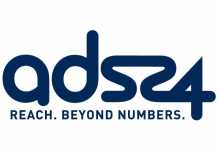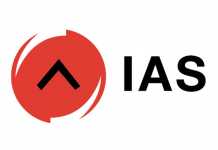Media research has undergone a huge transformation and upgrade in the past few years and the establishment survey (ES) now provides the perfect tool for cross comparison of research from different media types. The ES integrates the data commissioned by the BRC (Broadcast Research Council): TAMS (Televisions Audience Measurement Survey) and RAM (Radio Audience Measurement); and the PRC (Print Research Council): PAMS (Print Audience Measurement Survey). It replaces AMPS (All Media Product Survey), except that it does not provide brand data. This is a huge omission, especially for marketers.
The perfect solution for a brand add-on to the ES can be provided by Target Group Index (TGI) research through the Ask Afrika Group. TGI is considered to be one of the largest product, brand and lifestyle surveys in South Africa and Ask Afrika owns the local copyright. It is harmonised with 70 global markets and has various integrated software modules. It offers the most comprehensive insights into demographics, behaviour, product and brand use and attitudes. TGI provides a robust complimentary base to the ES.
Implications of the absence of product and brand information in the ES
The ES LSM and AMPS LSMs are very different and the ES does not contain product and brand information. Therefore assessing new target markets for brands can’t simply be done through runs, using either the ES LSM (Living Standards Measure) or SEM (Socio Economic Measure) descriptions. The industry will need to find new ways to identify previous target market consumers. Identifying viable target individuals is a challenge. TGI data can provide brand insights as well as stability in reporting and trends to try and combat the break in continuity in the transition from AMPS to the ES. TGI will allow brand owners to continue to profile brand users and track or identify specific demographic and psychographic areas where growth is most rapid.
At present there is no other comprehensive, robust and unbiased research available to the industry on which to profile and trend brands and conduct competitor tracking. There will be no other nationally representative study including brands on which to ‘trend’ brand profiles and growth until the second or third year of the MASA /NewCo Products and Brands Survey.
The initial MASA /NewCo Products and Brands research will need to be ‘tested’ against subsequent fieldwork periods post it’s envisaged initial 2018 release – there will be no trends available until 2019, and even then it will be a single year-on-year (YOY) picture. In these challenging and competitive economic times, marketers can’t afford to be without insights from the AMPS 2015 to the 2019 release of Products & Brand data. TGI plays a significant role, valid for a majority of urban based brands, for the next two to three years.
How TGI compliments the ES
The ES establishes the overall South African media landscape across media platforms and TGI describes the lifestyle of consumers within the media landscape by means of product and brand usage, psychographics, lifestyle and attitudinal information.
TGI is a products and brands survey that supports and compliments currencies globally and in South Africa – with a 10 year history. TGI measures over 450 product categories, over 8000 brands and over 600 psychographic, lifestyle and attitude statements. It covers a broad range of industry sectors including: food, household products, pets and pet food, toiletries and cosmetics, confectionary and snacks, sports and leisure, DIY and gardening, electronics and other personal items, health and pharmaceutical products, beverages/non-alcoholic drinks, alcoholic drinks, tobacco products, motoring, holidays and travel, internet and communications, appliances and other household durables, shopping for groceries, retail and clothing, and finance services.
“TGI is used by 66% of the top 50 marketers and 63% the top 50 media owners – it is becoming the de facto alternative to AMPS. TGI has six times more products and brands measured than AMPS, as well as the desirable global psychographics section, which clients find particularly useful,” says Maria Petousis, TGI Director at Ask Afrika.
The differences between the two surveys
TGI’s universe is all South African’s aged 15 and older, residing in communities of over 8000 where the ES includes all communities in SA. TGI is busy incorporating a rural component covering communities below 8000. TGI makes use of the Enumerated Area (EA) sampling frame and the ES uses the IHS sampling frame, however, both these frames are updated regularly by making use of the Census and other Official Statistic population figures of Statistics SA as well as GIS technology for satellite imagery and aerial photography to incorporate additional land use information and shifts.
The latest improvements to TGI
TGI changed in 2017 from a single-source methodology to a chunked methodology with a fusion component after data collection, to improve the research experience for respondents and the data quality for TGI subscribers – respondent fatigue has been avoided. The best of current data-science techniques have become available to Ask Afrika.
In addition, the data collection methodology is now completely Computer-Assisted Personal Interviewing (CAPI), which minimises respondent fatigue, provides superior data quality through immediate data access and control, and the live addition of questions becomes possible. TGI fieldwork is managed by Ask Afrika, which has been recognised by the global head office of TGI for its sampling excellence and superior data collection capability.
“TGI has a disproportionate sample to ensure optimal allocation when the strata (e.g. provinces, race groups) differ in size. One needs to ensure optimal sample sizes to get better precision for the smaller strata. Thus, in TGI we boost smaller groups for precision. Proportional allocation does not necessarily give optimal allocation. TGI’s weighting efficiency is an indication of having an optimal allocation with a minimal impact on the proportions. The weight efficiency industry norm is between 77.8% and 100%, TGI is proud to announce a weighting efficiency of 97% in the previous TGI2016C release. This indicates that the TGI sample is truly robust and representative of the population,” says Petousis.
And then add geospatial brand data
In addition to TGI, geospatial brand data can be added to the ES. Ask Afrika recently launched their new geospatial product, GeoScope. TGI has had the capability to map demographics and density, but this new tool is revolutionary in that it allows all data, including psychographics, to be shown spatially. Any dataset can be visually and geographically represented.
“GeoScope is a key decision making tool where you can visually plot, view, and overlay research data combined with census information and psychographic descriptions available in TGI, making it the richest dataset currently available to marketers and brand owners,” says Petousis, “It will blast consumption assumptions out of the water.”
For further information contact: Sanna Fourie, sanna.fourie@askafrika.co.za or Maria Petousis, Maria.Petousis@tgi.co.za on 012 428 7400.























































































